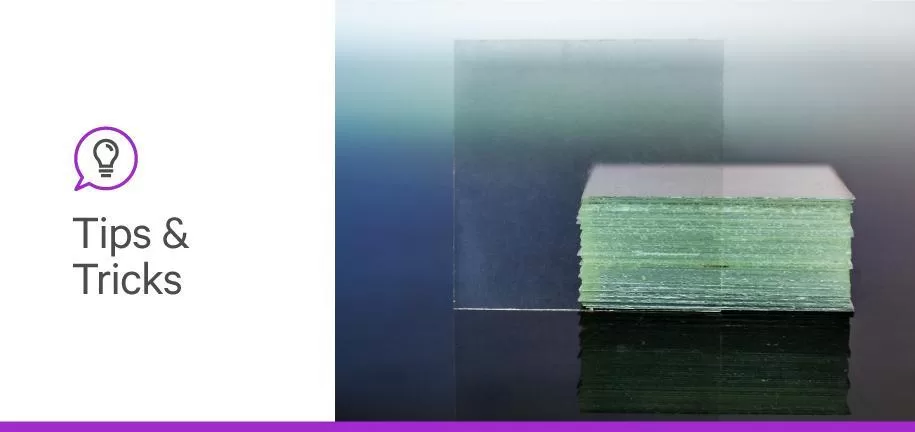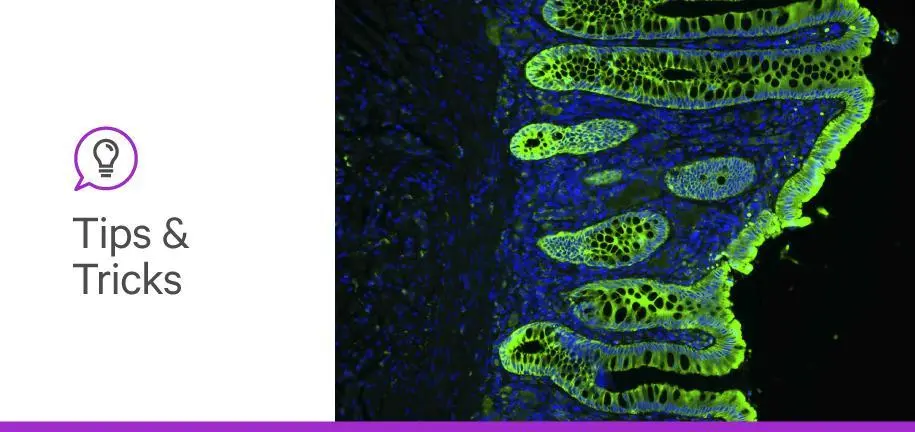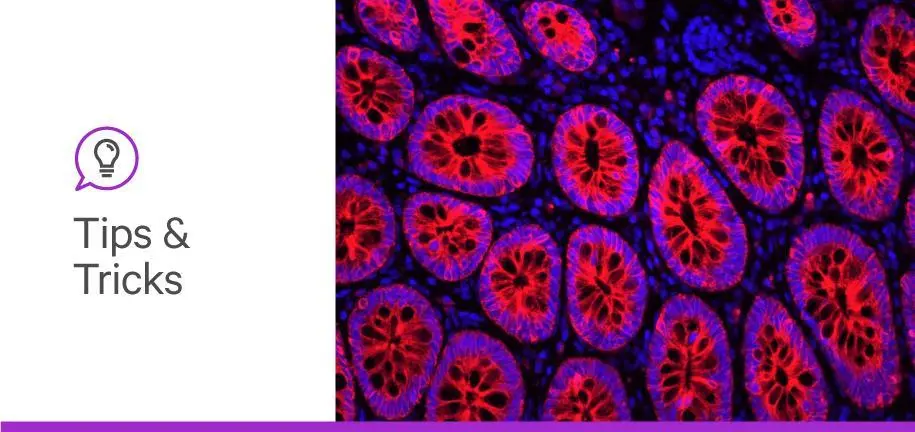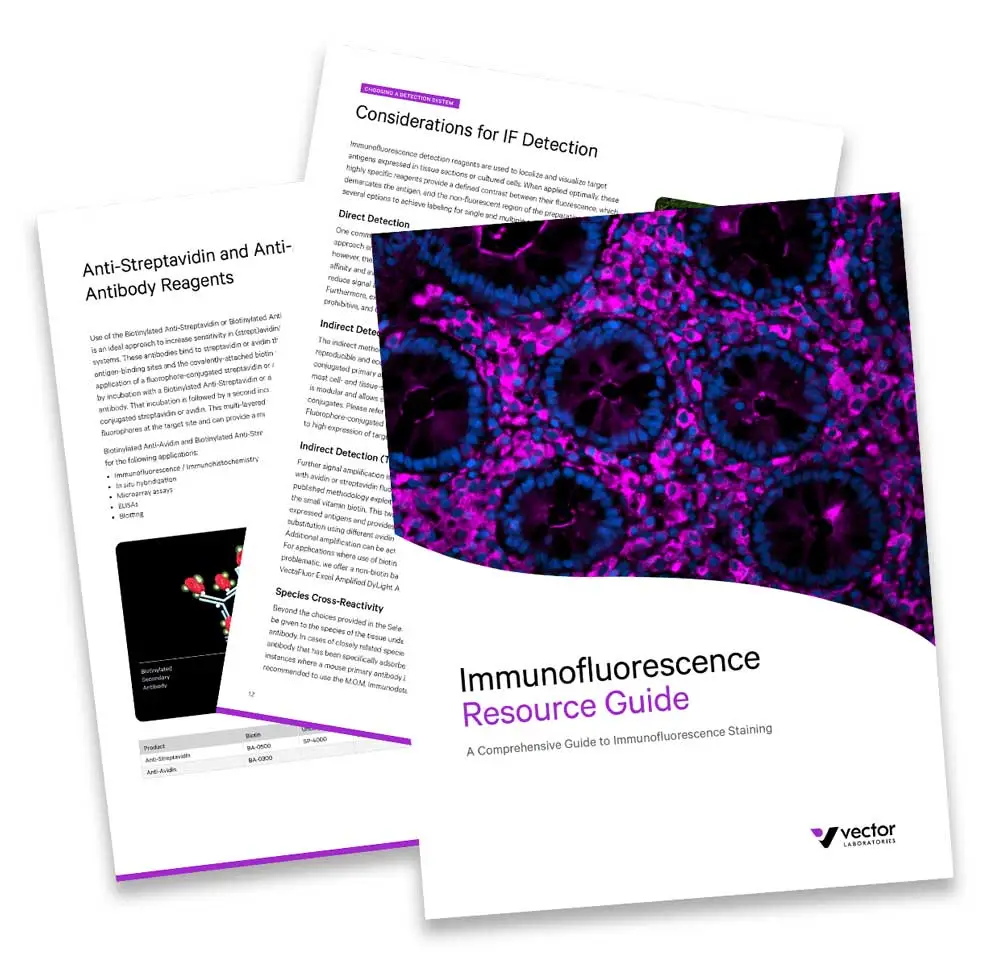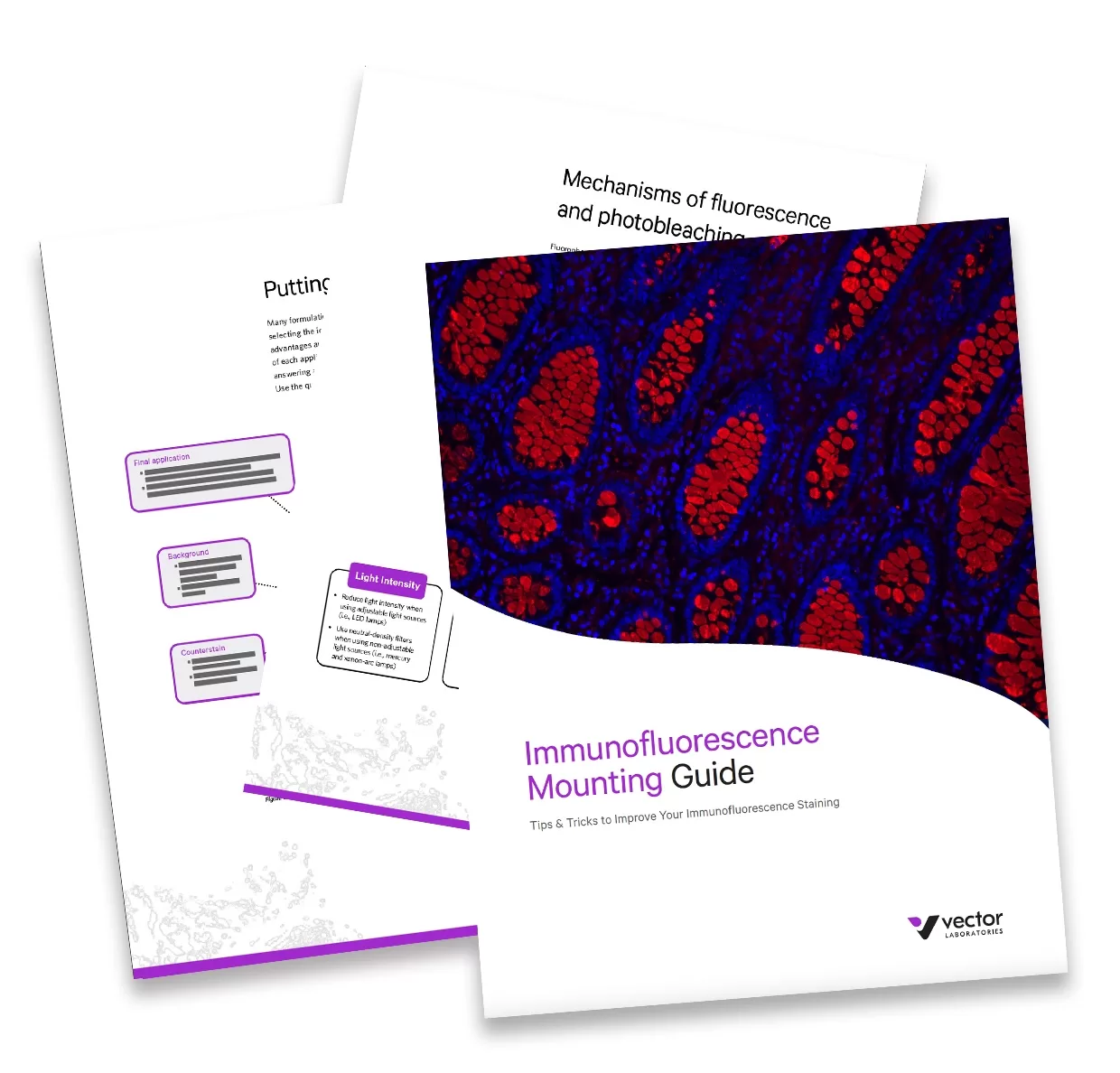Mounting Media
Selection of mounting media for immunohistochemistry (IHC) or immunofluorescence (IF) applications
In tissue-based histology, mounting media is a critical component of preparing samples for microscopic examination. Mounting media refers to the solution in which the sample is immersed to attach it to a glass slide. This process is commonly known as “mounting a sample”. The right media is essential for protecting your samples and ensuring clear signals during viewing.
Depending on your specific application, the mounting media may be liquid or resinous and designed for short- or long-term archiving. Other factors, such as refractive index and viscosity, also play a role in determining the appropriate mountant for your needs. Make sure to choose a high-quality mounting media to ensure accurate and reliable results.
Vector Laboratories manufactures the industry’s best selection of mounting media for light and epi-fluorescent microscopy applications. Our mountants are backed by independent research and optimized for either immunohistochemistry (IHC), immunofluorescence (IF), or Live Cell Imaging applications.
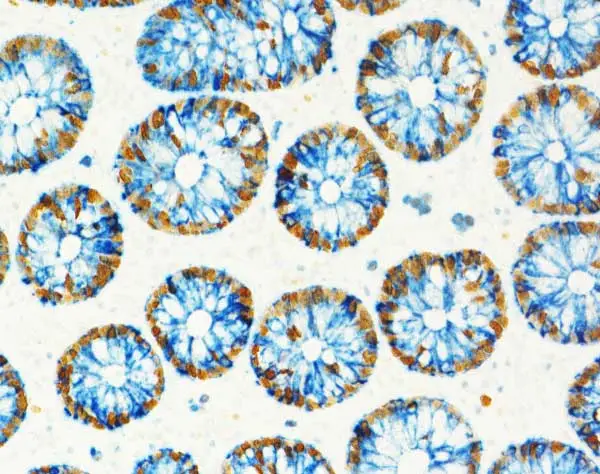
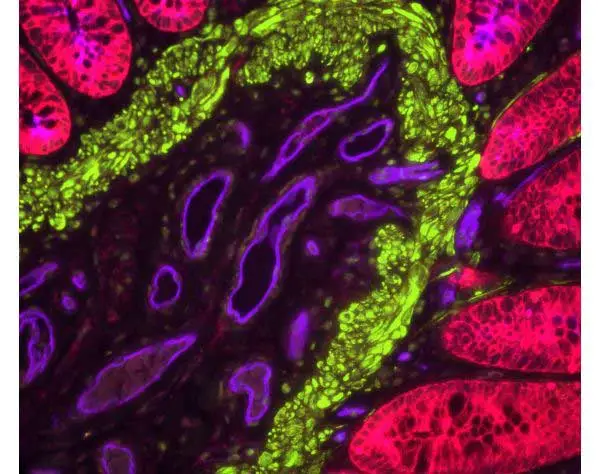
Explore Mounting Media
When applying a coverslip, the correct mounting medium preserves your histochemical stains or precipitable enzyme substrates in tissue sections or cell preparations.
VectaCell Trolox Antifade Reagent is an antifading additive for live cell imaging. It reduces phototoxicity and photobleaching of reagents to increase cell viability and prolong signal.
Maximum retention of signal intensity is crucial for visualizing and imaging fluorescently stained target antigens in cell and tissue specimens. VECTASHIELD Antifade Mounting Media inhibit fading and photobleaching of most fluorophores, dyes, fluorescent proteins, and stains.
What’s the Purpose of Mounting Media?
Mounting media adhere your specimen to a glass slide and coverslip, and in doing so, provide a protective benefit to your sample. Some mounting media have been developed with additional benefits including:
- To prevent cells from drying out
- To prevent signals from fading or photobleaching
- To preserve specimens for short or long-term storage
- To improve the optical clarity of samples when viewed under the microscope
What are the Different Types of Mounting Media?
Mounting media can be classified as:
- Liquid mounting media, such as aqueous glycerol and lactophenol-based fluid media
- Solidifying (or semi-solid) media, including natural and synthetic gums and resins
- Water-soluble mounting media (e.g., glycerol-gelatin and gum-chloral)
- Partially water-tolerant mounting media (e.g., Euparal)
- Hydrocarbon-soluble mounting media (e.g., neutral Canada balsam)
Which Mounting Medium Should I Choose?
Choosing the ideal mounting medium for your application will require that you identify what is most important to you. Areas of consideration might be the length of time for which you intend to protect and store your sample. Or perhaps it might be whether any chemical incompatibilities exist between your sample type and the solvents of the mounting medium.
Considerations when choosing Mounting Medium should include:
The Application:
- Immunohistochemistry (IHC) or light microscopy applications: Use a colorless mounting medium, like our clear-dry VectaMount Mounting Medium.
- Immunofluorescence (IF) applications: Use a medium that protects the fluorescent signal with antifade, anti-photobleaching properties, like our VECTASHIELD PLUS Antifade Mounting Media
Optical Clarity
- For maximum clarity, detail, and contrast, the refractive index (RI) of the mounting medium should be close to that of glass (1.5) or the sample’s fixed/dried protein layers (1.53).
- VectaMount has an RI of 1.49 when dry and VECTASHIELD mounting media has an RI of ~ 1.45 – both superior to other commonly used reagents (e.g. Fluoromout-G has a refractive index of ~ 1.40).
Permanence
For the long term storage of a specimen, the use of a hardsetting medium is recommended.
- For IHC applications, we recommend VectaMount Mounting Medium. It has an RI of 1.49 when dry and is ideal for IHC applications.
- For IF applications, we recommend VECTASHIELD Vibrance. It has an ideal RI (~ 1.45), is easy to use, and eliminates the need for the sealing of coverslips.
Protection from oxidation, changes in pH, and other physical or chemical damage
Mounting media should resist microbial contamination, bubble formation, crystallization, shrinking, cracking, and deformation.
- Samples mounted with VectaMount media can be safely stored at room temperature for at least two years.
- VECTASHIELD Vibrance Mounting Medium shows no loss of signal intensity or sample integrity after weeks of storage at room temperature.
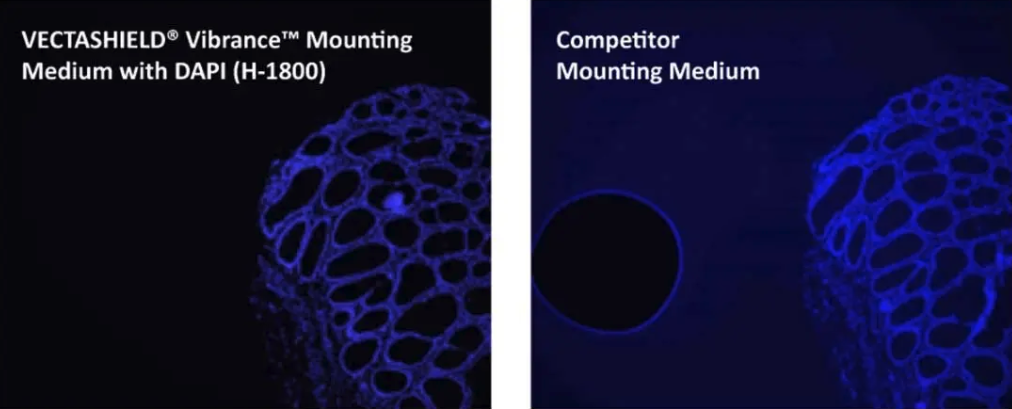
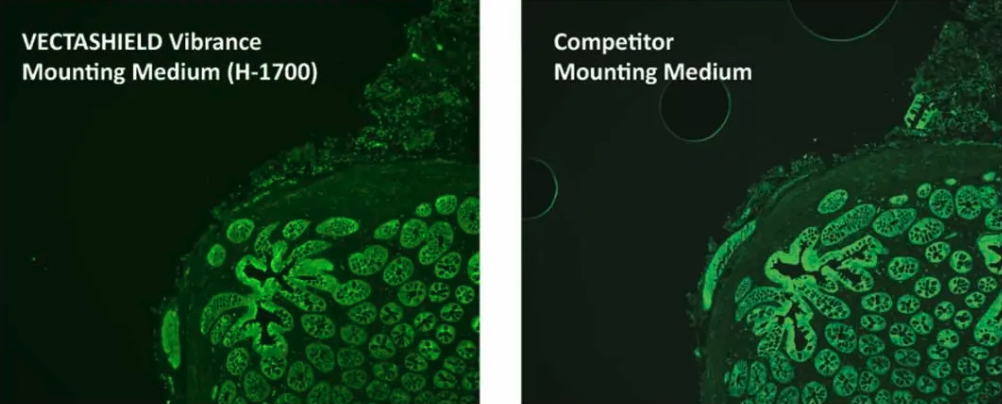
Resources
How to mount a coverslip on a slide
Correctly coverslipping your slides ensures that your tissue specimens are preserved for optimal imaging and viewing. In this blog post, we will walk you through how to properly coverslip your slides to protect your samples.
Read MoreHow to choose antifade mounting media
As far as antifade mounting media go, one-size-fits-all solutions are few and far between. Here, we break down key factors you should consider when choosing the best antifade mounting medium for your experiment.
Read MoreSetting media vs non-setting mounting media: Which is right for you?
You’ve got lots of options when it comes to choosing a mounting media. Let us help you decide whether setting or non-setting mounting media will work best for your workflow in this Tips & Tricks article.
Read MoreProducing immunofluorescence (IF) staining results with high specificity and sensitivity begins with choosing the best reagents. This guide will help you:
- Learn about the IF workflow and how to optimize each step
- Quickly identify and choose the most appropriate fluorescent secondary conjugates
- Select the best anti-fade medium to preserve your fluorescence signal for imaging and archiving
Mounting, the last step in the IF workflow, is critical for tissue integrity, optical clarity, long-term storage, signal intensity, and fluorescence preservation. This IF mounting guide provides information to help researchers choose the best mounting medium for their project and offers tips to help reduce photobleaching during the image visualization process.

